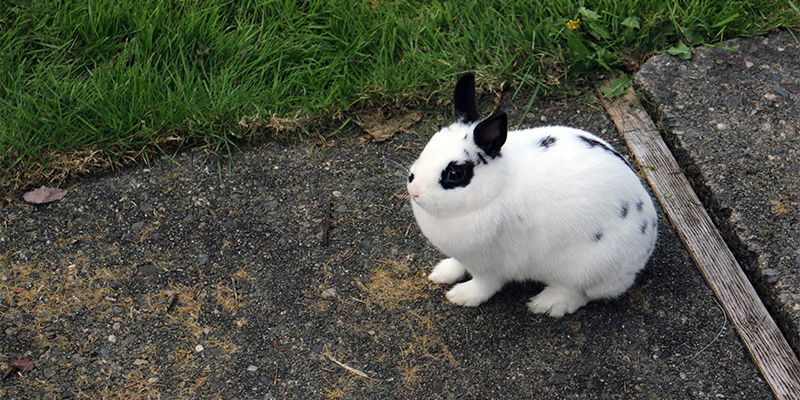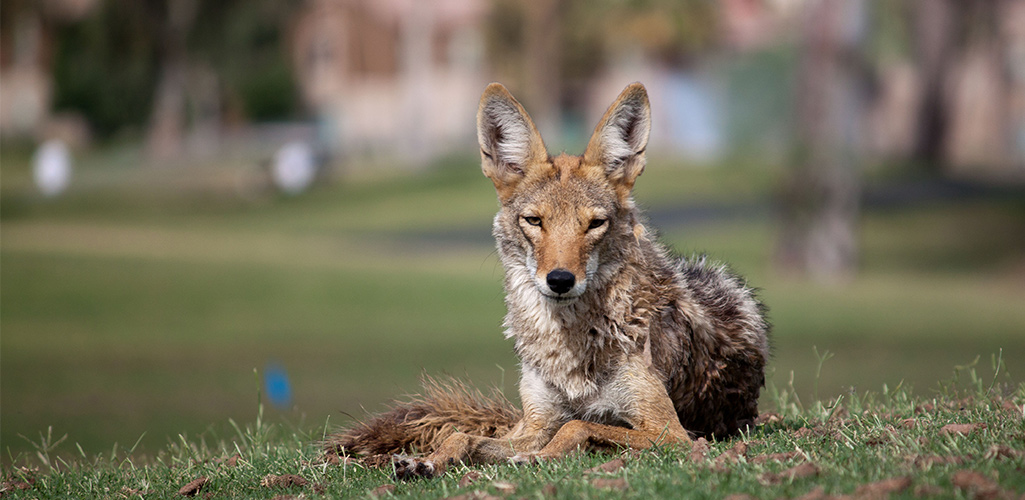Urban wildlife is a term that has been coined to describe wildlife that has adapted their lifestyle to living in the concrete jungles of cities and suburban neighborhoods.
While city dwellers in the United States may be all too familiar with the typical wildlife such as rats, pigeons, and crows; many people might not be aware that a fox or a deer may be lurking nearby. You may never know that a beaver lives in your neighborhood until you see one that was the victim of moving vehicle. Oftentimes many of our wild neighbors go unseen, and many of them prefer it that way.
There are many types of urban wildlife but they all share some common characteristics:
- Most urban wildlife are generalists, meaning that they are don’t have a strict diet and can adapt to eating a variety of food options.
- They are can easily adapt to new situations and learn how to survive despite radical changes to their environments.
- Having a higher tolerance towards people makes it easier to live in the middle of the hustle and bustle of the city.
Not all wildlife benefit from the city lifestyle and some prefer to avoid humans all-together. To better understand what types of animals live in urban environments, it is important to understand how they interact with the urban environment.
Urban wildlife generally fall into one of these categories (domesticated, exploiters, adapters, or avoiders) (McKinney, 2006).
Domesticated Animals

Animals that either live with people, as well as those that live in feral colonies, are considered urban wildlife since they have an impact on native wildlife (Urban Wildlife Working Group, 2012). Domesticated animals disturb, compete directly with native species for habitat and resources, and predate upon native species. Feral cat colonies are one of the biggest threats to native bird and small mammal species, and livestock compete with native species for food and space.
Examples: Domesticated cattle, goats, sheep, pigs, rabbits, dogs, and cats.
Exploiters

Wildlife that are considered exploiters generally can take advantage of the resources gained from living amongst people. They tend to be generalists and can consume many of the different food sources both natural (native plants) and human-based (gardens, trash, and food left out for domesticated animals). Their populations may increase dramatically when living in urban environments due to their ability to take advantage of the plethora of resources. Once established, these animals may become dependent on these human-provided resources for survival (McKinney, 2006).
Examples: Rats, raccoons, pigeons (rock doves), cottontail rabbits, cockroaches, and crows.
Adapters

Wildlife that can adapt to the urban environment and may take advantage of resources provided by living near people, but do not benefit as much from living near people. Their population sizes may increase more than when living in the suburban and rural environments than wild environments. These types of animals are more likely to be found in the suburbs than deep within the urban environment.
Examples: Coyotes, bobcats, red foxes, whitetail deer, hawks, and sparrows.
Avoiders

Wildlife that may stumble into the suburban environment but do not receive any benefits of living near people. They are occasionally found on the edge of suburban environments but are rarely, if never, found deep within suburban or urban environments. They tend to be native species that have specific habitat and dietary needs that cannot be accessed in urban areas.
Examples: Wolves, bears, cougars, elk, and spotted owls.
Human-Wildlife Conflicts

As urban development continues to creep towards untouched wilderness there is going to be an increase in human-wildlife conflict. It is also inevitable that wildlife will keep adapting to the ever-changing environment and will start finding ways to survive amongst people. Certain animals have an easier time surviving in the urban jungle than others and the best way to avoid conflict is to learn how to adapt to these changes yourself. Often the biggest conflicts occur when wildlife overpopulate an area due to an increased reliance on unnatural food sources provided by people (Ditchkoff, Saalfeld, & Gibson, 2006). In the wild there would be a natural increase in wildlife populations when food sources are plentiful, but this is balanced out by predators also increasing in population and this keeps both predator and prey populations in check.
In urban environments, the conflict occurs when people have a problem with this increase in population size. Here are some ways to help decrease conflicts with wildlife:
- Don’t leave food outside for cats and dogs.
- Lock up domesticated animals at night to avoid predation.
- Keep cats inside and/or allow them to go outside but only in enclosed areas to reduce their impact on native wildlife populations.
- Lock outside trashcans or keep trashcans in an enclosed area when not being placed at the curb for trash collection.
When wildlife relies on food that you are providing to them, you are increasing the risk of conflicts with wildlife. Feeding cats outside attracts animals (such as raccoons) that would like to take advantage of that food source. It also attracts animals (such as coyotes) that would like to take advantage of your cats and other wildlife that has become attracted to the area as a food source.
When wildlife becomes a problem the best thing to do is to contact your local animal control or wildlife rehabilitation center for more information.
Below you can find some additional resources on Urban Wildlife:
Paws Wildlife Rehabilitation Center – Do’s and Don’ts
Paws Wildlife Rehabilitation Center – Having a Wildlife Problem?
King County - Wildlife in Urban and Urbanizing Areas
Washington Department of Fish and Wildlife – Nuisance Wildlife
Animal Care and Control – Living with Urban Wildlife
Do you have any photos or stories you would like to share with us about urban wildlife? Feel free to post them to our facebook page!
References
Ditchkoff, S. S., Saalfeld, S. T., & Gibson, C. J. (2006). Animal behavior in urban ecosystems: modifications due to human-induced stress. Urban Ecosystems, 9(1), 5-12.
Lowry, H., Lill, A., & Wong, B. (2013). Behavioural responses of wildlife to urban environments. Biological Reviews, 88(3), 537-549.
McKinney, M. L. (2006). Urbanization as a major cause of biotic homogenization. Biological Conservation, 127(3), 247-260.
Urban Wildlife Working Group. (2012). Urban Wildlife Basics. Retrieved from The Urban Wildlife Working Group: http://urbanwildlifegroup.org/urban-wildlife-information/
Banner photo - “Urban Coyotes” flickr photo by Dru Bloomfield - At Home in Scottsdale https://flickr.com/photos/athomeinscottsdale/5850114465 shared under a Creative Commons (BY) license
